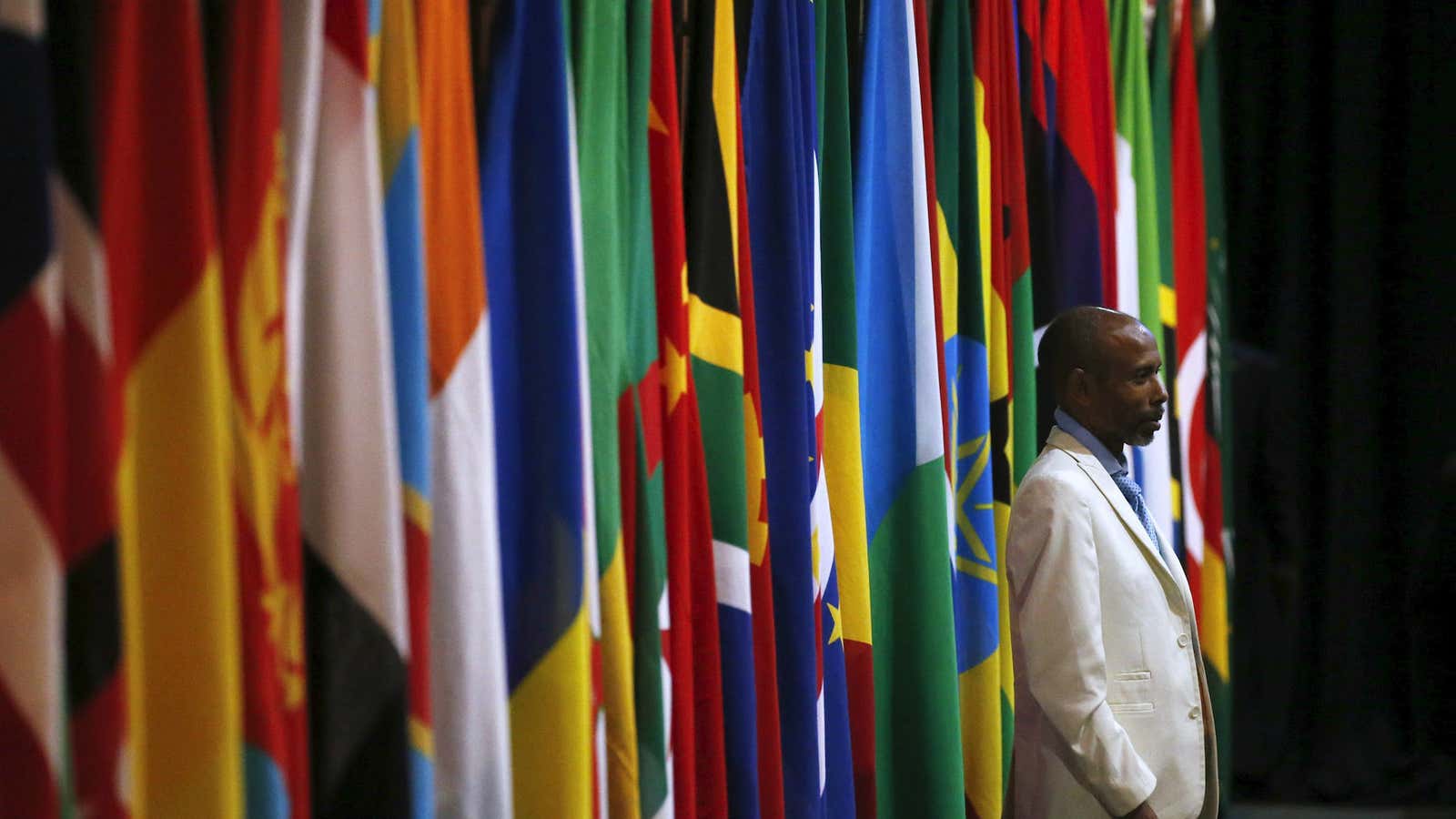For the past year, African economies have been emotionally preparing for the US Federal Reserve’s rate hike. Now that it’s happened—an increase by a quarter point of the benchmark short-term interest rate—the effect has been largely anti-climactic.
Currencies in Kenya, Uganda, and Ghana were mostly unaffected and are expected to stay unchanged next week. Stocks from emerging markets overall rose with a benchmark emerging equity index reaching a nine-day high. Central bank officials on the continent have issued staid comments about how prepared they are to defend their economies as years of an emerging market boom fueled by low interest rates in the US threaten to unwind.
Analysts say the long-anticipated rate increase has already been priced in. African currencies have already taken a beating this year. Falling commodity prices and lowered demand from China are putting pressure on Nigeria’s naira and South Africa’s rand especially. Investors are expected to have withdrawn a net $541 billion from of emerging markets in 2015. Central banks on the continent have been raising interest rates despite slowing growth.
Still, the worst is not over. Countries like Ghana, with a high current account deficit and rapid build up of debt in the private sector, or South Africa with its high levels of foreign debt, will be the most vulnerable to the risk of capital flight. An analysis by the Institute of Chartered Accountants in England and Wales (ICAEW) ranks African countries by their vulnerability according to these three factors.
Much of Ghana’s debt is in dollar-denominated bonds and Accra is still planning another eurobond issue next year at a higher rate to attract investors. As the Ghanian cedi slumps against the dollar, paying back those debts will be even more expensive. Kenya’s current account deficit, at 10.4% of GDP and private sector credit growth of 17.8% since 2013 also makes East Africa’s largest economy more vulnerable to the rate hike.
South Africa is ranked 40th but things still don’t look good for sub-Saharan Africa’s second largest economy. Dependent on mining exports to a slower growing China, it is expected to see growth of below 1.5% this year. Government debt is expected to reach 49% of GDP in 2016. Angola, the continent’s second largest oil producer, is hit by low oil prices in an industry that is its main source of foreign reserves. The country may struggle to pay for its imports of food, consumer goods, and industrial material.
The fallout is not just limited to the continent. ”African economies are still expected to be one of the brighter spots in the global economy in our forecast horizon. This means that many other economies are relying on Africa for important growth opportunities, and hence a fallout there could impact the availability of attractive investments, weighing on global levels of FDI and other financial linkages,” Danae Kyriakopoulou, ICAEW’s economic adviser and senior economist at Cebr told Quartz.
